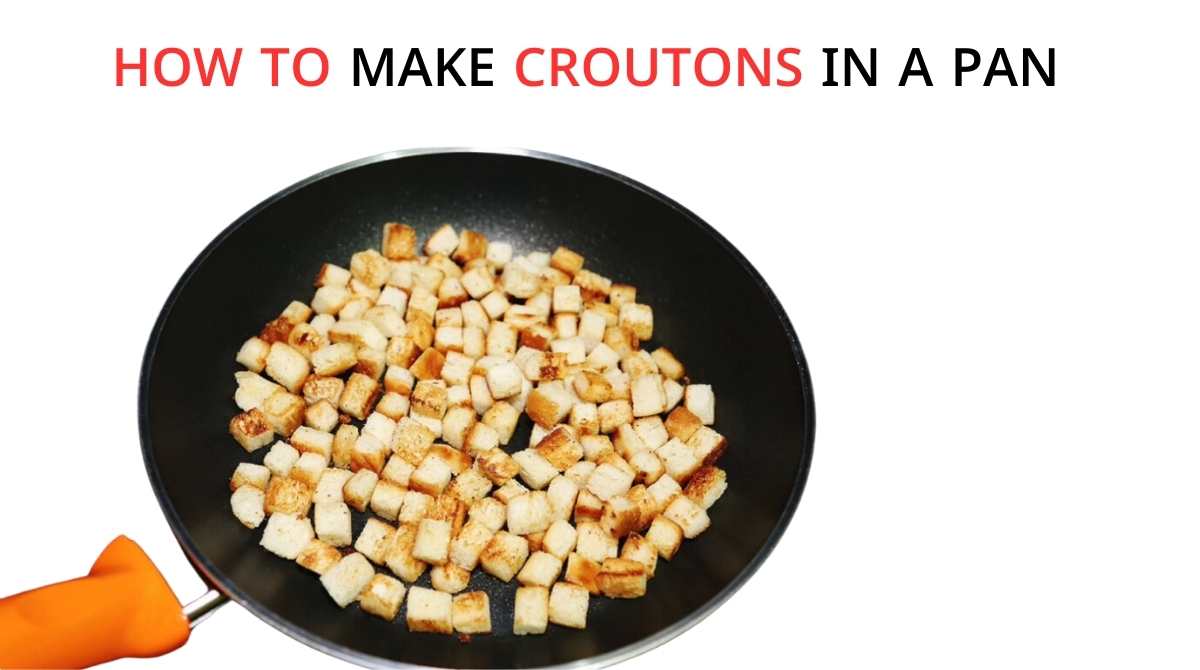How to make croutons in a pan? is a common question. Croutons add a delicious crunch to salads and soups. Making croutons in a pan is quick and easy. Use stale bread for the best results.
Cut the bread into uniform cubes to ensure even cooking. Heat a pan over medium heat and add a generous amount of oil or butter.
Toss the bread cubes in the pan, stirring frequently to avoid burning. Season with your favorite herbs and spices for added flavor.
Within minutes, golden, crispy croutons will be ready to enhance your dishes. Enjoy the homemade touch and superior taste of freshly made croutons.
Ingredients Needed
Making croutons in a pan is a quick and delightful way to add a crunch to your salads or soups. The key to delicious croutons is using the right ingredients.
Let’s dive into the essential ingredients needed for an easy croutons recipe.
Bread Types
The type of bread you choose plays a significant role in the texture and flavor of your croutons. Here are some excellent bread options:
- French Bread: This bread is light and airy. It creates croutons that are crunchy on the outside but soft on the inside.
- Sourdough: Sourdough adds a tangy flavor to your croutons. It also has a dense texture that holds up well in a pan.
- Whole Wheat Bread: Whole wheat bread offers a nutty flavor and is a healthier option. It makes hearty croutons.
- Baguette: A baguette can make very crispy croutons. Its firm texture is perfect for pan-frying.
Consider using day-old bread. Stale bread absorbs the seasoning better and provides a crunchier texture.
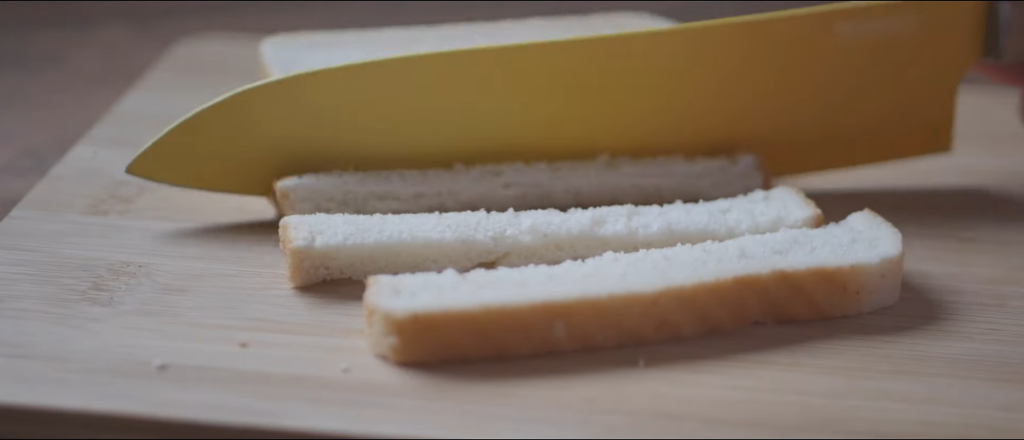
Seasoning Options
Seasoning your croutons is where you can get creative. Here are some fantastic seasoning options to consider:
- Garlic Powder: Adds a robust and savory flavor.
- Italian Seasoning: A blend of herbs like oregano, basil, and thyme enhances the taste.
- Parmesan Cheese: Grated Parmesan adds a cheesy richness to your croutons.
- Salt and Pepper: Basic but essential for bringing out all the flavors.
- Paprika: Adds a mild heat and a beautiful color.
Mix and match these seasonings to suit your taste. You can also add fresh herbs like parsley or rosemary for a burst of freshness.
Butter Vs. Oil
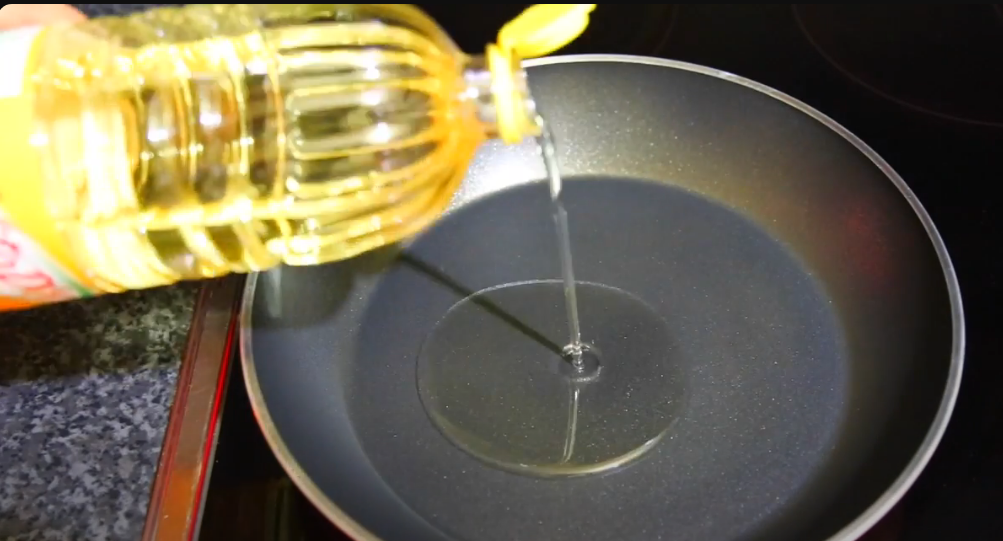
Choosing between butter and oil can impact the flavor and texture of your croutons. Let’s explore the differences:
| Butter | Oil |
| Rich Flavor: Butter offers a rich and creamy taste. | Neutral Taste: Oil, especially olive oil, has a milder flavor. |
| Crispy Texture: Butter browns quickly, giving a crispy texture. | Even Cooking: Oil provides even cooking and prevents burning. |
| Health Consideration: Butter contains saturated fats. | Healthier Option: Oils like olive oil are rich in healthy fats. |
For a classic taste, use butter. If you prefer a healthier option, go for olive oil. Combining both can also yield excellent results.
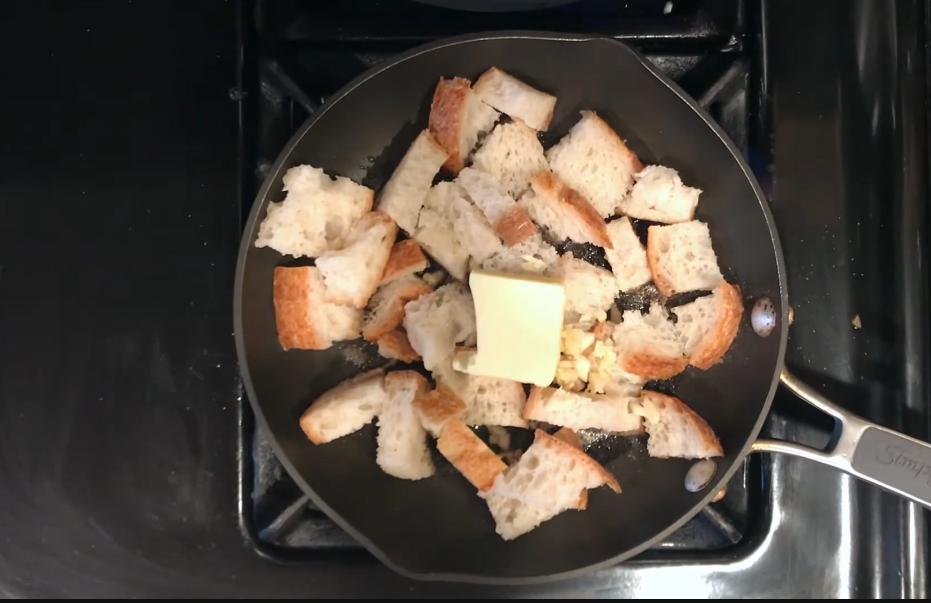
Choosing The Bread
Making croutons in a pan is a quick and easy way to add crunch to your salads and soups. The secret to the perfect crouton lies in choosing the right bread.
Whether you use stale or fresh bread, each type has its own benefits and considerations. Let’s dive into the details to help you make the best choice.
Stale Bread Benefits
Using stale bread for croutons is a fantastic idea. Stale bread is already dry, so it crisps up nicely in the pan. Here are some benefits of using stale bread:
- Less waste: Utilizing stale bread helps reduce food waste.
- Better texture: Stale bread absorbs oil and seasoning more effectively.
- Even toasting: The dryness ensures the bread toasts evenly without becoming soggy.
Here’s a quick comparison table to summarize:
| Stale Bread | Benefit |
| Reduces waste | Environment-friendly |
| Better texture | Crispier croutons |
| Even toasting | More uniform crunch |
Stale bread is perfect for croutons because it is already halfway dried out, making it ideal for toasting.
The bread’s structure holds up well in the pan, resulting in crunchy, flavorful croutons.
Fresh Bread Considerations
Fresh bread can also be used for croutons, but there are some things to consider:
- Moisture content: Fresh bread has higher moisture, which may lead to soggier croutons.
- Preparation time: Fresh bread may require additional drying time before toasting.
- Flavor: The flavor of fresh bread can add a unique taste to your croutons.
Here’s a quick comparison table for fresh bread:
| Fresh Bread | Consideration |
| Higher moisture | Possible sogginess |
| Extra drying time | Longer prep time |
| Unique flavor | Enhanced taste |
To use fresh bread, slice it into cubes and let it sit out for a few hours to dry. This helps to reduce moisture and ensures better toasting.
Fresh bread can yield delicious croutons with a soft inside and a crunchy exterior.
Preparing The Bread
Croutons are a delightful addition to salads and soups. Learning how to make croutons in a pan is simple and rewarding. The first step is preparing the bread.
Ensuring the bread is cut and sized properly is key to delicious, evenly cooked croutons.
Cutting Techniques
When learning how to make bread croutons, the way you cut the bread is essential. Proper cutting techniques ensure each crouton is uniform and cooks evenly.
Start by selecting a firm bread, like a baguette or sourdough. Avoid soft, fresh bread as it can become mushy.
- Use a serrated knife: A serrated knife helps to slice through the bread without squishing it.
- Cut into slices: First, cut the bread into 1/2 inch thick slices. Thicker slices might not crisp up well.
- Make even cubes: After slicing, cut the bread into cubes. Aim for uniformity to ensure even cooking.
For those who prefer visual aids, consider the table below on how to make bread croutons with different cutting techniques:
| Technique | Result |
| Slice into strips, then cubes | Uniform croutons |
| Hand-torn pieces | Rustic look, uneven cooking |
| Pre-sliced bread | Thin, may burn quickly |
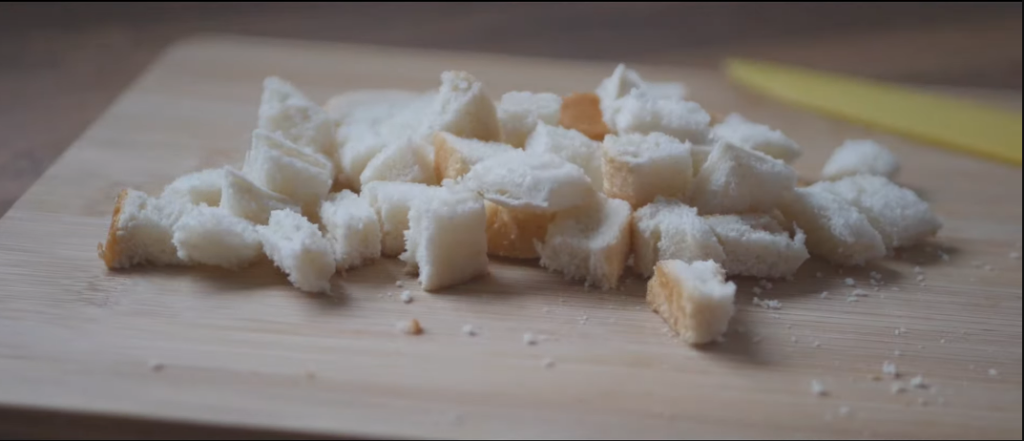
Sizing For Even Cooking
The size of your croutons is crucial for even cooking. When learning how to make croutons in a pan, consistency in size ensures each piece is crispy and golden.
Aim for cubes that are about 1/2 inch on each side.
- Measure your cubes: Use a ruler to get a sense of size if needed.
- Consistency: Try to make all pieces the same size.
- Avoid large pieces: Bigger chunks might not cook evenly.
Here are some tips for achieving the perfect size:
- Use a cutting board: This helps keep your cuts straight and even.
- Check your work: Lay out the cubes to ensure they are uniform.
- Adjust as needed: If some pieces are too big, cut them down.
By focusing on size, your croutons will cook evenly and be a perfect addition to any dish.
Seasoning Croutons
Making croutons in a pan is a quick and easy way to add some crunch to your salads and soups. One of the most crucial aspects is seasoning the croutons.
Proper seasoning transforms simple bread cubes into delightful bites bursting with flavor. Below are some ways to season your croutons to make them irresistible.
Herbs And Spices
Herbs and spices can elevate the taste of croutons significantly. The right blend of herbs and spices can make your croutons unique. Here are some ideas to get you started:
- Italian Seasoning: A mix of basil, oregano, rosemary, and thyme.
- Herbes de Provence: A combination of thyme, rosemary, marjoram, and lavender.
- Smoked Paprika: Adds a smoky, slightly sweet flavor.
- Cayenne Pepper: For a spicy kick.
Below is a table listing common herbs and spices with their flavor profiles:
| Herb/Spice | Flavor Profile |
| Basil | Sweet and peppery |
| Oregano | Earthy and slightly bitter |
| Rosemary | Piney and woody |
| Thyme | Lemony and slightly minty |
Use these herbs and spices in small amounts. You can always add more, but you can’t take it out.
Mix your chosen herbs and spices with a bit of olive oil before tossing the bread cubes. This ensures even coverage and prevents burning.
Garlic And Cheese Options
Garlic and cheese are classic crouton seasonings. Croutons with garlic are popular for a reason.
They add a rich, savory flavor that pairs well with many dishes. Here are some ways to incorporate garlic and cheese:
- Fresh Garlic: Mince fresh garlic and mix it with olive oil. Toss the bread cubes in this mixture.
- Garlic Powder: Easier to use and less likely to burn. Sprinkle it evenly over the bread cubes.
- Parmesan Cheese: Adds a salty, nutty flavor. Grate it finely and mix it with the bread cubes.
- Cheddar Cheese: For a sharper taste. Melt it slightly before tossing with the bread cubes.
Here is a simple recipe for garlic and cheese croutons:
| Ingredient | Amount |
| Bread Cubes | 2 cups |
| Olive Oil | 2 tbsp |
| Minced Garlic | 1 clove |
| Grated Parmesan | 1/4 cup |
Mix the olive oil and minced garlic. Toss the bread cubes in this mixture. Cook in a pan over medium heat until golden brown.
Sprinkle grated Parmesan over the croutons during the last minute of cooking.
Heating The Pan
Making croutons in a pan is a quick and easy way to add a crunchy topping to salads and soups. Heating the pan correctly is crucial to achieving the perfect texture and flavor.
A well-heated pan will ensure your croutons are crispy on the outside and tender on the inside.
Choosing The Right Pan
Selecting the right pan is the first step in making delicious croutons. The type of pan you use can affect the cooking process significantly.
Here are some tips for choosing the right pan:
- Non-stick pans: These are great for easy cleanup and ensure your croutons don’t stick.
- Cast iron skillets: These provide even heating and can add a nice, rustic flavor.
- Stainless steel pans: These are durable and can handle high temperatures well.
Each type of pan has its benefits. For example, non-stick pans are ideal for beginners because they prevent the bread from sticking.
Cast iron skillets are perfect if you want a deeper flavor and even heating. Stainless steel pans are excellent for achieving a crispy texture.
| Pan Type | Advantages |
| Non-stick | Easy cleanup, prevents sticking |
| Cast iron | Even heating, adds flavor |
| Stainless steel | Durable, handles high temperatures |
Understanding how to make croutons in the oven can also help you choose the best pan for your stovetop. Remember, the goal is to achieve a consistent, crispy texture.
Temperature Settings
Setting the correct temperature is vital for making perfect croutons in a pan. The right heat ensures your croutons cook evenly without burning.
Follow these tips for the best temperature settings:
- Medium heat: Start with medium heat to prevent burning.
- Adjust as needed: If the croutons brown too quickly, lower the heat.
- Even cooking: Stir the croutons frequently to ensure even cooking.
Using medium heat allows the croutons to cook slowly, ensuring they get crispy without burning. Adjusting the heat as needed helps you control the cooking process better.
Stirring frequently ensures that each piece of bread gets the same amount of heat.
Here’s a simple guide to temperature settings:
| Heat Level | Description |
| Low | Takes longer, risk of soggy croutons |
| Medium | Ideal for even cooking, prevents burning |
| High | Quick cooking, risk of burning |
Once you understand how to make croutons in the oven, you’ll find that managing the temperature on the stovetop becomes easier.
Consistent heat is key to achieving the perfect crouton.
Cooking Process
Making croutons in a pan is a simple and delicious way to elevate your salads and soups. The cooking process is straightforward and ensures that your croutons are perfectly crispy and flavorful.
This guide will explore the key steps to achieve the best croutons recipe, focusing on timing and stirring techniques.
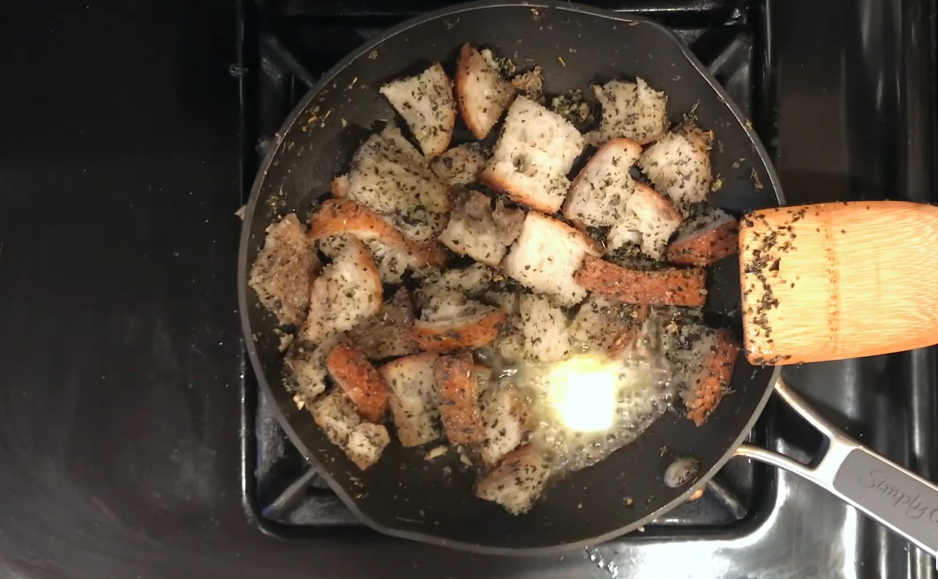
Timing For Perfect Crunch
Timing is crucial for making croutons that are crispy on the outside and soft on the inside. Heat your pan over medium heat and add your favorite oil or butter.
Once the oil is hot, add the bread cubes in a single layer. This ensures even cooking.
Cook the croutons for 7-10 minutes, stirring occasionally. Here’s a simple breakdown of the timing:
| Time (minutes) | Action |
| 0-3 | Start cooking, stir every 1 minute |
| 4-7 | Stir every 2 minutes, check for even browning |
| 8-10 | Final crisping, stir as needed |
Watch the croutons closely during the last few minutes. They can burn quickly. Remove from heat once they reach a golden brown color.
Stirring Techniques
Proper stirring techniques ensure that your croutons cook evenly. Use a spatula or wooden spoon for best results. Here are some tips:
- Stir gently to avoid breaking the bread cubes.
- Stir every 1-2 minutes to ensure even cooking.
- Toss the pan occasionally to flip the croutons without using a utensil.
Distribute the oil evenly by stirring consistently. This helps each crouton get crispy. If you notice some croutons browning faster, redistribute them in the pan.
Avoid overcrowding the pan. Overcrowding leads to uneven cooking and soggy croutons. Cook in batches if necessary.
Following these stirring techniques, you’ll achieve a perfect croutons recipe every time. The right balance of timing and stirring makes all the difference for delicious, crunchy croutons.
Storing Croutons
Making croutons in a pan is a simple and fun way to add crunch to your salads and soups.
Once you’ve made these delicious homemade croutons, knowing how to store them properly will keep them fresh and crispy for longer.
This section will guide you on the best container options and shelf-life tips.
Container Options
Choosing the right container is crucial for keeping your homemade croutons fresh and crispy. Here are some great options:
- Airtight Containers: These are the best choice for storing croutons. They keep out moisture and air, preserving the crunch.
- Glass Jars: Mason jars or other glass containers with tight-fitting lids work well. They are also easy to clean.
- Plastic Bags: Use resealable plastic bags if you don’t have jars or containers. Squeeze out as much air as possible before sealing.
Here’s a quick comparison of different container options:
| Container Type | Pros | Cons |
| Airtight Containers | Best freshness, reusable | Can be bulky |
| Glass Jars | Easy to clean, reusable | Breakable, heavy |
| Plastic Bags | Space-saving, disposable | Not eco-friendly, less durable |
Shelf Life Tips
To ensure your croutons stay fresh and tasty, follow these shelf life tips:
- Store in a Cool, Dry Place: Keep your croutons away from heat and humidity. A pantry or cupboard is ideal.
- Use Within Two Weeks: For the best flavor and texture, consume your croutons within two weeks of making them.
- Check for Staleness: If your croutons start to lose their crunch, you can re-toast them in a pan for a few minutes.
Remember these tips to enjoy your homemade croutons at their best:
- Don’t Store in the Fridge: Refrigeration can make croutons soggy.
- Keep Away from Strong Odors: Croutons can absorb odors from other foods, affecting their taste.
Following these simple storage tips will help keep your homemade croutons fresh, crunchy, and delicious for as long as possible.
Serving Suggestions
Making croutons in a pan is quick and easy, giving you tasty, crunchy bites to add to your meals. With homemade croutons, you can elevate any dish.
Let’s explore some serving suggestions to make the most of your freshly made croutons.
Salad Pairings
Croutons for salad are a delightful addition, providing a satisfying crunch and absorbing dressing flavors. Here are some salad pairings to try:
- Caesar Salad: The classic Caesar salad is incomplete without croutons. Their crispy texture contrasts with the creamy dressing.
- Greek Salad: Add croutons to a Greek salad for extra crunch. They pair well with the tangy feta and olives.
- Garden Salad: A simple garden salad becomes special with croutons. Toss them with lettuce, tomatoes, and cucumbers.
For a more detailed guide, check out the table below:
| Salad Type | Ingredients | Crouton Flavor |
| Caesar Salad | Romaine, Parmesan, Caesar Dressing | Garlic and Herb |
| Greek Salad | Cucumbers, Feta, Olives | Oregano and Olive Oil |
| Garden Salad | Lettuce, Tomatoes, Cucumbers | Butter and Sea Salt |
Soup Complements
Croutons add texture and flavor to soups, making each spoonful delightful. Here are some soup complements to enhance your meal:
- Tomato Soup: Croutons add a delightful crunch to smooth tomato soup. Their buttery flavor complements the tangy tomatoes.
- French Onion Soup: Traditionally topped with croutons, this soup benefits from their crispy texture. They hold up well in the savory broth.
- Butternut Squash Soup: Add croutons to this creamy soup for a perfect balance. Their crunch contrasts with the smooth texture.
Here are some tips to enhance your soups with croutons:
- Use Seasoned Croutons: Add flavor by using seasoned croutons like garlic or herb-infused.
- Top Just Before Serving: To keep croutons crunchy, add them to your soup just before serving.
- Experiment with Flavors: Try different crouton flavors to find your favorite combinations.
Croutons for salad and soup complement each other perfectly, making your meals more enjoyable.

FAQ’s
How To Keep Homemade Croutons Crispy?
Store homemade croutons in an airtight container. Add a paper towel to absorb moisture. Keep them in a cool, dry place. Re-toast in the oven for a few minutes if they soften.
How Long Do Croutons Last After Making?
Homemade croutons typically last up to two weeks. Store them in an airtight container at room temperature.
Can You Crush Croutons To Make Breadcrumbs?
Yes, you can crush croutons to make breadcrumbs. Simply place them in a bag and crush with a rolling pin.
What Are Croutons Traditionally Made Of?
Croutons are traditionally made from cubed and seasoned bread. They are baked or sautéed to achieve a crispy texture.
Conclusion
Making croutons in a pan is simple and quick. Enjoy crispy, homemade croutons with your favorite salads or soups.
Experiment with different seasonings to find your perfect flavor. This easy method ensures you always have fresh croutons on hand.
Start making your own today and elevate your meals effortlessly.

